Best Professional Tripod for Heavy Lenses
If your travel photography gear includes DSLR cameras and heavy lenses, use our guide to find the best tripod to meet your needs.
This list of solidly built tripods for heavy lenses will help you get sharper images when photographing in low light, capturing long exposures, panoramas, and panning shots.
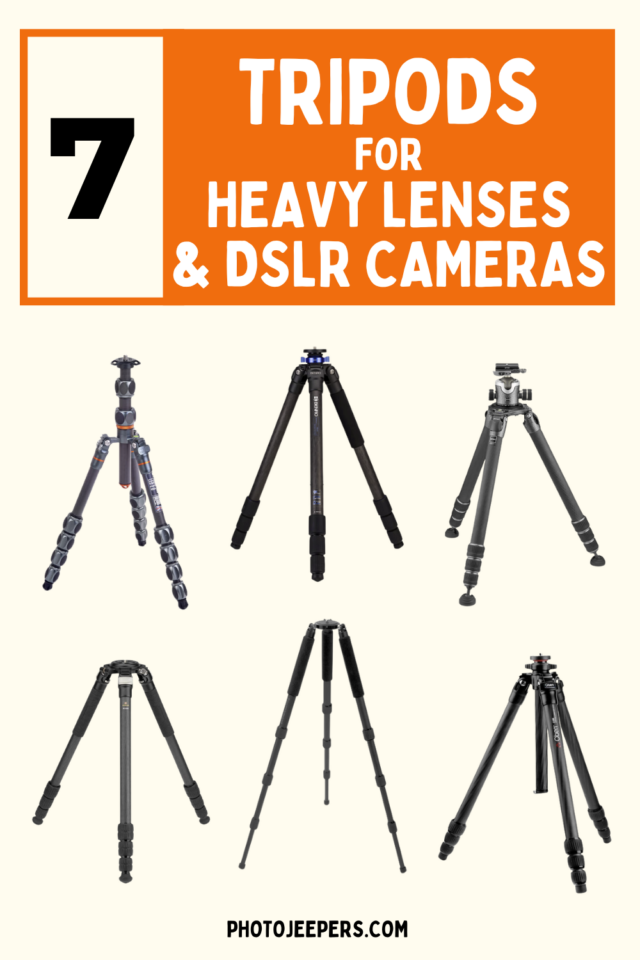
This guide also lists out HOW to choose the best tripod for heavy lenses and DSLR cameras!
For those of you with large and heavy lenses for wildlife photography, this guide will help you find a heavy-duty camera tripod that fits your needs and budget.
Here are a few resources for photographing wildlife:
- Wildlife Photo Tips and Ideas
- Best Cameras for Wildlife Photography
- Best Tripods for Wildlife Photography
- Best Lenses for Wildlife Photography
This site contains affiliate links which means WE may receive commissions for purchases made through these links. We only provide links to products we actually use and/or wholeheartedly recommend! As an Amazon Associate, we earn from qualifying purchases. Read the full Disclosure Policy.
AT A GLANCE: BEST TRIPODS FOR HEAVY LENSES
Use this chart to see a comparison of tripod features. Read the full descriptions of each tripod below this chart.
| Tripod | Material | Load Capacity | Height Range | Folded Length | Weight | Price |
| Gitzo Systematic Series 5 | Carbon Fiber | 88.18 lbs (40 kg) | 3.9″ to 78” | 28.35” | 6.88 lbs (3.12 kg) | AMAZON | B&H PHOTO |
| Robus RC-5570 Vantage Series 3 | Aluminum Alloy, Carbon Fiber | 55 lbs (24.95 kg) | 4″ to 70.1″ | 25.4″ | 5.6 lbs (2.54 kg) | AMAZON | B&H PHOTO |
| FEISOL CT-3442 Tournament Rapid | Carbon Fiber | 55 lbs (24.9 kg) | 7.9″ to 54.3″ | 18.9″ | 2.4 lbs (1.1 kg) | AMAZON | B&H PHOTO |
| 3 Legged Thing Leo 2.0 | Carbon Fiber | 66 lbs (29.94 kg) | 4.9″ to 40.6” | 14.7″ | 3.4 lbs (1.54 kg) | AMAZON | B&H PHOTO |
| Benro Extra Long Series 4 Mach3 | Aluminum Alloy | 44.1 lbs (20 kg) | 18.7″ to 71.1″ (85.1″ with center column) | 31.3″ | 6.8 lbs (3.1 kg) | AMAZON | B&H PHOTO |
| Manfrotto Super Professional Mk2 | Aluminum Alloy | 44.1 lbs (20 kg) | 17.3” to 95.3″ (105.1″ with center column) | 41.3″ | 17.5 lb (7.9 kg) | AMAZON | B&H PHOTO |
| Oben CT-2491 Carbon Fiber | Carbon Fiber | 39.6 lbs (18 kg) | 6″ to 62.5″ (72.5″ with center column) | 23.3″ | 3.5 lb (1.6 kg) | AMAZON | B&H PHOTO |
Best Professional Tripods for Heavy Lenses and DSLRs
We’ve put together this list of tripods that are made to hold heavy lenses and cameras. Be sure to research the features, capabilities and price to find the one that best fits your photography style and goals.
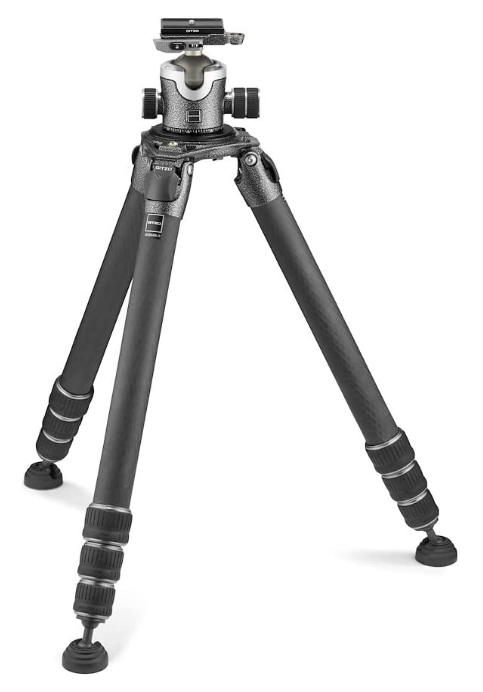
1. Gitzo Systematic Series 5 Tripod
A head-to-head comparison of the RRS TVC-45 and Gitzo Series 5 will leave you more confused than convinced on which of the two is ultimately the best!
But when you dig deeper into their features, variations, versatility, and ease-of-use, Gitzo has an upper hand. That’s why we would consider it before the RRS TVC-45.
Gitzo Systematic Series 5 Key Specs:
- Material: Carbon Fiber
- Load Capacity: 88.18 lb (40 kg)
- Weight: 6.88 lb (3.12 kg)
- Max. Height: 78″ (198 cm)
- Min. Height: 3.9″ (10 cm)
- Folded Length: 28.35″ (72 cm)
- Leg Sections: 4
- Leg Lock Type: Twist Lock
- Head Mount Thread Size: 3/8″-16 Screw
- Independent Leg Spread: Yes
- Bubble Level: Yes
- Center Column: No
The Gitzo Systematic Series 5 comes in five different versions that vary depending on their maximum working height. At the bottom is the “Standard” version with a max height of 52.8″, while at the top is the “Giant” version that towers 109.4″ high.
In between, there are two “Long” versions with 57.1″ and 61.4″ max heights, and an “Extra Long” version that extends 78″ high. We personally find the Extra Long variation the best among the five!
Why? Because the difference in maximum heights of these tripods also affects their weight, leg sections, folded length, and overall resistance to wind vibrations. But keep in mind that they all have a uniform minimum working height of 3.9”.
The Extra Long version has the perfect balance of these features. It stretches 6 feet 6 inches high, making it ideal for tall individuals. And with just 4 leg sections, it will remain steady in all kinds of weather.
Pros:
- Built to last with relatively lightweight Gitzo’s patented carbon eXact tubing that is extremely sturdy.
- Supports a massive load capacity of up to 88 pounds, but only weighs 6.9 pounds making it very lightweight to carry when traveling or working out in the field.
- It folds down to 28.35” inches, a length that is quite convenient for traveling.
- Very tall but extremely rigid for rock-solid steadiness when shooting with the heaviest of photography equipment.
- The G-lock ultra twist locks offer secure and quick leg-lock operation, which gives it an upper hand on the ease-of-use compared to RRS TVC-45.
- Each leg features a wider 50mm articulating rubber feet for unbeatable stability.
- The rubber feet can be removed and replaced with optional metal spikes for enhanced stability in ice, snow, mud, dirt, and sand.
- The 3.9” minimum working height makes it a wonderful tripod for low-angle and macro photography.
- The tripod base features a 3/8″-16 Easy Link attachment thread where you can connect a variety of accessories like shoe adapters and magic arms.
Cons:
- Quite pricey.
- The 28.35″ folded length won’t fit in the standard carry on luggage.
The Gitzo Systematic Series 5 is what you invest in when you want to shoot pro-quality photos. It will hold up even the heaviest of setups with excellent stability.
The extra height makes it great for professionals who want to get up high with super-telephoto zoom lenses like in architecture, wildlife, and astrophotography.
If you would like an extra height, you can go for the Giant version that extends 109.4” high. Otherwise, I would recommend the 57.1″ Long version, with 3 leg sections, if you’d like a shorter, more stable version of the same.
CHECK AVAILABILITY & PRICE:
- Amazon: Gitzo Series 5 Tripod
- B&H Photo: Gitzo Series 5 Tripod
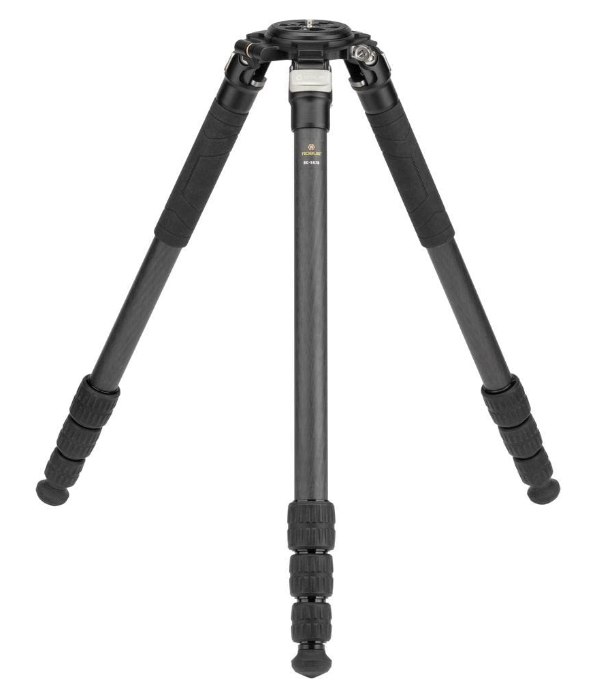
2. Robus RC-5570
The Robus RC-5570 Vantage Series 3 has the ideal balance of top-notch quality, flawless functionality, and pricing. We would say it’s the perfect Gitzo Series 5 alternative for photography enthusiasts.
Robus RC-5570 sells at less than half the price of the Gitzo Series 5 that we recommend as our best tripod for heavy lenses and DSLRs. But despite the lower price tag, this tripod still offers top of the line performance and durability.
Robus RC-5570 Vantage Series 3 Key Specs:
- Material: Aluminum Alloy, Carbon Fiber
- Load Capacity: 55 lb (24.95 kg)
- Weight: 5.6 lb (2.54 kg)
- Max. Height: 70.1″ (178.1 cm)
- Min. Height: 4″ (10.2 cm)
- Folded Length: 25.4″ (64.52 cm)
- Leg Sections: 4
- Leg Lock Type: Twist Lock
- Head Mount Thread Size: 3/8″-16 Male
- Independent Leg Spread: Yes
- Bubble Level: Yes
- Center Column: No
The Robus RC-5570 features carbon fiber construction that delivers steady stability when working with heavy photo equipment in all kinds of weather. But at 5.6 pounds in weight, it’s relatively lightweight to carry around when traveling and shooting in the field.
The carbon fiber legs combine with the tripod’s anodized CNC-machined spider to provide rock-solid support of loads weighing up to 55 pounds. And it extended up to 70 inches high, for a seamless eye-level shooting experience for tall individuals.
RC-5570 is one of the four different versions of the Robus Vantage Series 3 heavy-duty tripods. The other versions include the smallest RC-5558 with up to 55 lb load capacity and extends up to 58” high and the biggest RC-8880 with up to 77 lb load capacity and extends up to 80” high.
There is also the RC-8860 that supports loads of up to 77 pounds and extends up to 63.8” high. All four versions have four leg sections and a minimum working height of 4” which is great for low-angle and macro photography.
The availability of this tripod in different variations is one of the reasons we recommend it as the best affordable Gitzo Series 5 alternative. And in our opinion, Robus RC-5570 has the best balance of load capacity, weight, and maximum height.
Pros:
- Premium build-design that makes it the right tripod for professionals who want a more affordable Gitzo or RRS alternative.
- The 10x carbon fiber leg construction dampens vibrations even when working in very windy conditions.
- Includes a hook at the bottom where you can hook extra weight for enhanced stability
- High-quality twist locks that open with a quarter turn for a quick and very secure leg locking and unlocking operation.
- Comes with three different sets of feet, rubber, wide rubber, and spikes for optimum stability when working in different terrains.
- Two of the legs feature heavyweight rubber sleeves for a comfortable and secure grip in all types of weather.
- Interchangeable top plate and 75mm video bowl.
- Three variable leg angles of 25, 55, and 85 degrees with the ability to spread each leg independently when working in uneven terrains.
- A soft carrying case and shoulder straps included in the package.
Cons
- Folds down to 25.4” which is a little longer to fit in your carry-on.
The Robus RC-5570 stands out as the best tripod for hobbyist and enthusiast photographers. Pairing it with the Wimberley WH-200 Gimbal Head will give you the best sports, wildlife, and bird photography experience. When working with super-telephoto zoom lenses.
CHECK AVAILABILITY & PRICE:
- Amazon: Robus RC-5570
- B&H Photo: Robus RC-5570
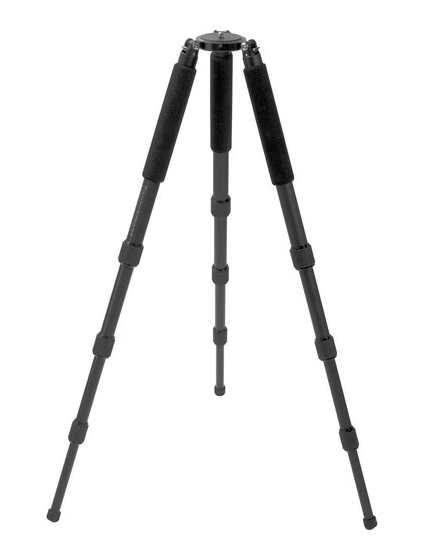
3. FEISOL CT-3442 Tournament Rapid
The Feisol CT-3442 is the perfect definition of a super lightweight, heavy-duty tripod. It offers the optimum balance of quality, weight, folded length, load capacity, strength, and price. This is the tripod we recommend to travel bloggers and adventure photographers who shoot with heavy lenses and DSLRs.
Feisol CT-3442 Tournament Rapid Key Specs:
- Material: Carbon Fiber
- Load Capacity: 55 lb (24.9 kg)
- Weight: 2.4 lb (1.1 kg)
- Max. Height: 54.3″ (137.9 cm)
- Min. Height: 7.9″ (19.6 cm)
- Folded Length: 18.9″ (48 cm)
- Leg Sections: 4
- Leg Lock Type: Twist Lock
- Head Mount Thread Size: 3/8″-16 Screw
- Independent Leg Spread: Yes
- Bubble Level: No
- Center Column: No
The FEISOL CT-3442 Tournament Rapid tripod weighs just 2.4 pounds making it the most lightweight tripod on the list. It folds down to 18.9”, allowing it to perfectly fit in your carry-on or small backpack.
This tripod features premium carbon fiber leg construction that allows it to steadily support photo equipment loads of up to 55 pounds. And it will still maintain rock-solid steadiness when fully extended to 54.3” high.
We recommend pairing it with the affordable Sirui K-20x Ball Head that also supports 55 pounds load capacity and only weighs 0.9 pounds. It is extremely sturdy and features control knobs for pan, tilt, and tension, and two bubble levels.
Pros:
- Super lightweight, compact, and very affordable for a heavy-duty tripod of its quality and performance.
- Easy to take apart and reassemble for maintenance and cleaning especially after working in the dirt.
- Uses secure twist locks for a quick operation when locking and unlocking the leg sections.
- Has 3 preset leg angles of 25, 50, and 75 degrees and goes down to just 7.9″ for low-angle photography.
- The package includes a tripod bag for storage and transportation.
Cons:
- It only extends up to 54.3” high, tall individuals will be forced to stoop a little or adjust the camera screen to shoot at eye level.
The FEISOL CT-3442 Tournament Rapid carbon fiber tripod is affordable, lightweight, compact, solid, and stable. These five features make it a true companion for minimalist backpackers, hikers, bloggers, and travel photographers who shoot with heavy DSLRs and super-telephoto zoom lenses.
CHECK AVAILABILITY & PRICE:
- Amazon: Feisol Tournament Rapid Tripod
- B&H Photo: Feisol Tournament Rapid Tripod
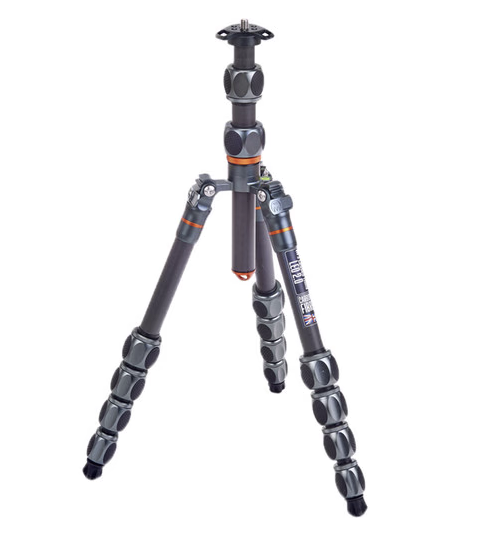
4. 3 Legged Thing Leo 2.0
At a folded length of 14.7”, the 3 Legged Thing Leo 2.0 is the most compact tripod on this list. It weighs just 3.4 pounds, making it super lightweight and easily portable for travel photography and blogging.
But despite its size, weight, and portability, this tripod will steadily support heavy lenses and DSLRs in all kinds of weather. We recommend it to minimalist backpackers and hikers who want an inexpensive, heavy-duty tripod.
3 Legged Thing Leo 2.0 Key Specs:
- Material: Carbon Fiber
- Load Capacity: 66 lb (29.94 kg)
- Weight: 3.4 lb (1.54 kg)
- Max. Height: 40.6″ (103.12 cm) (54.3″/137.9 cm with Center Column)
- Min. Height: 4.9″ (12.4 cm)
- Folded Length: 14.7″ (37.34 cm)
- Leg Sections: 5
- Leg Lock Type: Twist Lock
- Head Mount Thread Size: 3/8″-16 Male
- Bubble Level: Yes
- Center Column: Yes (removable, reversible with two-column sections)
The 3 Legged Thing Leo 2.0 features a unique construction with a removable center column and three detachable legs. And like the premium tripods in this list, it is made of carbon fiber for optimal stability in all kinds of weather.
Each leg of this tripod can be configured as a monopod that extends up to 39.9″ high. Alternatively, you can combine one of the legs with the center column to make a 55.7″ monopod.
Leo 2.0 extends up to 40.6″ high while steadily supporting a maximum load capacity of 66 pounds. Keep in mind that you can extend the height to 54.3″ with the center column, but this may lead to a little vibration in windy environments.
Pros:
- An inexpensive heavy-duty tripod that’s very lightweight and ultra-compact.
- A push-and-pull center column for rapid photography setup positioning.
- Twist-lock leg locking mechanism for quick and secure deployment.
- Can go down to just 4.9″ for low-angle and macro photography.
- The center column is reversible for ground-level photography.
- With the center column, it extends to 54.3″ high for seamless eye-level shooting.
- The rubber feet can be substituted with the optional 2 Legged thing spiked feet for enhanced stability on soft, uneven surfaces.
- The package includes a nice carrying bag for transport and storage convenience.
Cons:
- The 5 leg sections make it less resistant to wind vibration.
The 3 Legged Thing Leo 2.0 is the ideal pro-level tripod for minimalist travel photographers, bloggers, and adventure enthusiasts. It comes at an inexpensive price but offers solid stability when working with heavy lenses and DSLRs.
This tripod makes the perfect affordable alternative to the Feisol CT-3442. We recommend pairing it with the AirHed Pro Lever Ball Head from 3 Legged Thing. The ball head supports loads of up to 88 pounds and is Arca-type compatible.
CHECK AVAILABILITY & PRICE:
- Amazon: 3 Legged Thing Leo Tripod
- B&H Photo: 3 Legged Thing Leo Tripod
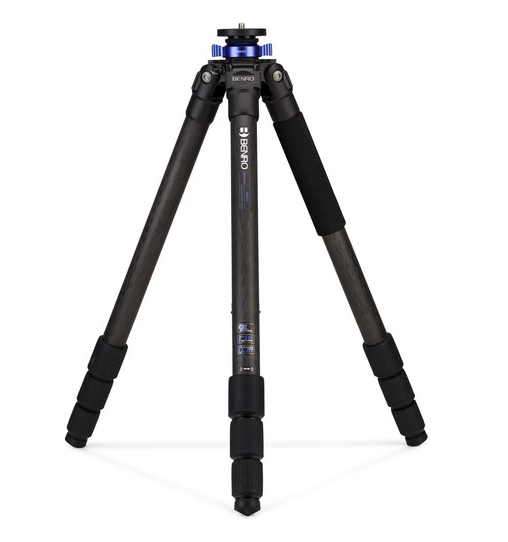
5. Benro Extra Long Series 4 Mach3
With the exemption of the Leo 2.0, all the other tripods in this list are mid-range or high-end priced. That makes sense since these are premium quality, heavy-duty tripods for powerful DSLRs and super-telephoto zoom lenses.
But this doesn’t mean you can’t find the best tripod for heavy lenses and DSLRs on a budget. The Benro TMA47AXL Extra Long Series 4 Mach3 is a wonderful choice for beginner and hobbyist photographers who are on a budget.
Benro Extra Long Series 4 Mach3 Key Specs:
- Material: Aluminum Alloy
- Load Capacity: 44.1 lb (20 kg)
- Weight: 6.8 lb (3.1 kg)
- Max. Height: 71.1″ (180.6 cm) (85.1″/216.2 cm with Center Column)
- Min. Height: 18.7″ (47.5 cm)
- Folded Length: 31.3″ (79.5 cm)
- Leg Sections: 3
- Leg Lock Type: Twist Lock
- Head Mount Thread Size: 3/8″-16 Screw
- Independent Leg Spread: Yes
- Bubble Level: Yes
- Center Column: Yes (Removable with one column sections)
Benro Extra Long Series 4 Mach3 supports loads of up to 44.1 pounds and weighs 6.8 pounds. Unlike the other tripods on the list, this one features aluminum construction.
What we really like about this tripod is its maximum working height of 71.1″ that can go up to 85.1″ high with the center column. This height offers the best eye-level shooting experience for tall individuals.
But it has two main downsides, the minimum working height of 18.7″ and the folded length of 31.3″. This folded length gives it a disadvantage during low-angle photography.
We recommend pairing it with the Sirui K-10x Ball Head which also supports loads of up to 44 pounds. This ball is very affordable and features control knobs for pan, tilt, and tension, and two bubble levels.
Pros:
- A well-built, affordable tripod that steadily supports demanding photo equipment.
- Its leg movement is smooth despite the bargain price.
- Twist lock system for quick and secure leg locking and unlocking.
- Retractable rubber feet that reveal spikes for working on soft, uneven surfaces.
Cons:
- The 31.3” folded length makes it a bit bulky for travel photography.
- At 6.8 pounds, it is twice as heavy as the Leo 2.0 which falls within the same price range.
- The twist locks aren’t as premium as what you would get in the other tripods on the list.
Benro Extra Long Series 4 Mach3 is one of Benro’s most advanced tripods. It combines premium aluminum material with a classic design to deliver high performance and durability.
We recommend it to beginners and enthusiast photographers who are on a budget. If you don’t mind the extra weight and bulk, then you will get the same stability and sturdiness as what the mid-range tripods in this list offer.
CHECK AVAILABILITY & PRICE:
- Amazon: Benro Series 4 Mach3 Tripod
- B&H Photo: Benro Series 4 Mach3 Tripod
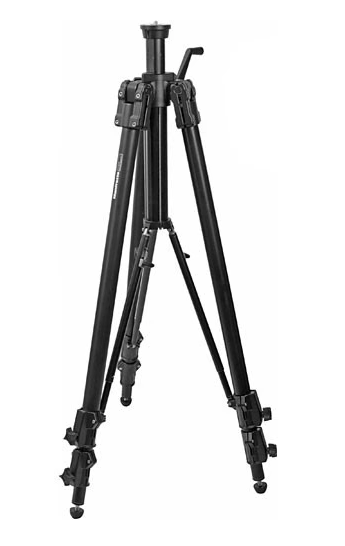
6. Manfrotto Super Professional Mk2
Manfrotto designed the 161MK2B Super Professional Tripod Mk2 for home and studio use. That explains its 17.5 pounds weight which makes it very heavy for travel photography.
But if you travel around with a truck, this might just be the perfect heavy-duty tripod for astrophotography and architecture photography, especially when shooting from the vehicle.
Manfrotto Super Professional Tripod Mk2 Key Specs:
- Material: Aluminum Alloy
- Load Capacity: 44.1 lb (20 kg)
- Weight: 17.5 lb (7.9 kg)
- Max. Height: 95.3″ (242.1 cm) (105.1″/267 cm with Center Column)
- Min. Height: 17.3″ (43.9 cm)
- Folded Length: 41.3″ (104.9 cm)
- Leg Sections: 3
- Leg Lock Type: Twist Lock
- Head Mount Thread Size: 3/8″-16 Screw
- Independent Leg Spread: No
- Bubble Level: Yes
- Center Column: Yes (with one column sections)
Manfrotto Super Professional Mk2 towers 95.3″ high when fully extended and up to 105.1″ with the center column. It supports loads of up to 44.1 pounds and will remain rock-steady regardless of the bulkiness of your photo equipment.
At 41.3” folded length and 17.5 pounds weight, it is very heavy and bulky for travel photography. But this tripod wasn’t meant for travel! Manfrotto designed it with studio and home photography and videography in mind.
Yet, some enthusiasts and professional architectural and astrophotographers find it extremely reliable for their work. It makes the perfect monster tripod that towers very high while steadily supporting serious equipment.
Pros:
- Superior build quality that keeps it free from vibrations even when the center column is fully extended.
- One of the tallest and most stable tripods for studio and home use.
- Stands steady even when supporting bulky DSLRs and demanding lenses.
- Geared center column for easy and accurate adjustment.
- Includes three set screws in the camera platform that allows you to permanently secure the head to the tripod for enhanced security.
Cons:
- It’s very heavy and bulky for traveling.
The Manfrotto Super Professional Mk2 is one of the best studio tripods for heavy lenses and DSLRs in the market today. It will support your heaviest studio photo equipment without even the slightest of vibrations. But it can also make the perfect companion for astrophotographers who use heavy astronomy equipment.
CHECK AVAILABILITY & PRICE:

7. Oben CT-2491 Carbon Fiber
The Oben CT-2491 tripod with GH-30 gimbal head is a wonderful tripod and gimbal head pairing that we would recommend to beginners and hobbyist sports, wildlife, and bird photographers.
Oben CT-2491 Key Specs:
- Material: Carbon Fiber
- Load Capacity: 39.6 lb (18 kg)
- Weight: 3.5 lb (1.6 kg)
- Max. Height: 62.5″ (158.8 cm) (72.5″/184.2 cm with Center Column)
- Min. Height: 6″ (15.2 cm)
- Folded Length: 23.3″ (59.2 cm)
- Leg Sections: 4
- Leg Lock Type: Twist Lock
- Head Mount Thread Size: 1/4″-20 Screw, 3/8″-16 Screw
- Independent Leg Spread: Yes
- Bubble Level: Yes
- Center Column: Yes (split two-column sections)
Like all the other heavy-duty tripods on the list, Oben CT-2491 Carbon Fiber features a premium quality carbon fiber construction. And when paired with the GH-30 Gimbal Head it makes the perfect sports and wildlife photography tripod.
This pairing is extremely sturdy and remains stable even when shooting in windy environments. With a load capacity of 39.6 pounds, the combination will support your heaviest DSLRs and super-telephoto zoom lenses.
Oben CT-2491 provides a working height range of 6” to 62.5”, and 72.5” with the center column. At 6” you can shoot high-quality macro and low-angle photos, and with the extended height tall individuals will enjoy eye-level shooting without stooping or adjusting the camera screen angle.
The tripod weighs 3.5 pounds and the head 3.2 pounds. The combination is still lightweight to carry around especially if you travel or hike a lot during your photography.
Pros:
- A beautiful, affordable pairing that’s very easy to set up,
- Super lightweight, and compact to travel with.
- Despite its affordable pricing, the tripod seems pretty sturdy and stable even when the height is fully extended.
- The extended tripod length is big enough for tall individuals to comfortably shoot at eye level through the viewfinder while standing.
- Rubberized feet that retract to reveal spikes for extra stability when working on soft, uneven terrain like ice, snow, and sand.
- The GH-30 Gimbal Head provides smooth, fluid movement when tracking and photographing wildlife, birds, and sporting events.
- Arca-type compatible plate with two 1/4″-20 threaded mounts, and also supplied with two 3/8″-16 bushings.
- The head supports loads of up to 44 pounds, making it ideal for long, bulky telephoto lenses like 150-600mm and 200-500mm.
Cons
- The twist locks are a bit stiffer and take a bit more force to tighten or loosen.
- The center column doesn’t lock down fully.
The Oben CT-2491 Carbon Fiber with GH-30 Gimbal Head is ideal for you if you want a complete tripod kit that extends tall but folds compact and lightweight at a budget. The pair would perfectly suit beginner to enthusiast-level sports, wildlife, and bird photographers.
CHECK AVAILABILITY & PRICE:
- Amazon: Oben CT-2491 Carbon Fiber
- B&H Photo: Oben CT-2491 Carbon Fiber
HOW TO CHOOSE THE BEST TRIPOD FOR HEAVY LENSES AND DSLRS
The fact that you are here tells you may already know why tripods can benefit your photography. Tripods provide a stable camera and lens support. And with enhanced stability, comes endless photographing possibilities.
You can easily capture long exposures, shoot in low-light, take panning shots, or document surreal panoramas. Regardless of your type of photography, you’ll be stunned by how a tripod can make a difference!
When working with heavy lenses and DSLRs, you will need to find a heavy-duty tripod to support the extra weight and bulk. Keep in mind that such a robust tripod doesn’t need to be heavy or bulky.
In this section of the guide, we will take you through the process of choosing the best tripod for heavy lenses and DSLRs.
Load Capacity
The first step to finding your ideal heavy-duty tripod is determining the amount of load that you’ll be putting on the tripod. That includes your camera, lenses, and any other accessory that hooks on your camera setup when shooting.
In most cases, you’ll be dealing with heavier and bulky DSLRs and telephoto lenses that weigh as much as 5 pounds each. That’s especially if you’re into wildlife, wedding, professional portrait, or sports photography.
Your ideal tripod should comfortably support at least 1.5 times the total weight of your heaviest lens and camera. While most of the high-quality tripods in the market will safely hold standard DSLRs, only a few can accommodate long telephoto lenses.
If you’re going to work with greater load capacity, consider getting a premium tripod. One that has been designed with high-quality material to work in the most demanding environments like the wild.
You don’t want to shoot from a tripod shaking under the weight of your camera setup. Actually, this contradicts the initial point of getting a tripod. It not only negatively affects the quality of your shots but also risks crashing the entire setup.
Material and Durability
The performance of a tripod is hugely determined by the material that is made of. In fact, it also in some ways determines its maximum load capacity. The two main materials used in the construction of tripods are aluminum and carbon fiber.
Aluminum Tripods
Aluminum is a tough, lightweight metal. Making it the widely used material in the construction of most travel tools. Well, including aircraft! It’s also inexpensive something that allows for designing and pricing the end product affordably.
In the construction of tripods, aluminum is used to make the heavy-duty models as it adds a lot of weight to offer more load-bearing support. Its main drawbacks include getting hot in hot weather and cold in cold weather.
Carbon Fiber
Carbon fiber is extremely lightweight, durable, and flexible, making it the most preferred material for top-quality tripods. And it is essentially weather resistant. It won’t get cold in the freezing winter nor hot under the scorching summer.
Yet, while aluminum is affordable, carbon fiber will cost you more. But with it, you will enjoy a virtually indestructible sturdy tripod that is super lightweight to easily carry along with your heavy photography lenses and DSLRs.
NOTE: There are many tripods out there made of wood and plastic. Wood is mostly used by nature photographers who don’t mind carrying bulky loads with them. Plastic tripods, on the other hand, are inexpensive and terrible in outdoor environments as they can get easily warped and damaged.
Size and Weight
Notwithstanding your type of photography, you most likely want to invest in a lightweight and easily portable camera equipment. That’s especially if you’re an on-the-go photographer looking to fit all your gear in a backpack.
As such, you should consider investing in a reliable lightweight tripod that affords to bear high load capacity while maintaining stability. Such a tripod should also be durable enough to last you through your most extreme photography adventures.
TIP: Some tripods will come hooks that give you the option to add extra weight to maintain steadiness by preventing vibrations. Keep in mind that heavier tripods are usually more stable!
Apart from weight, you should also consider the size of your ideal tripod. If it doesn’t fit in your carry-on bag or backpack, how will you bring it to the scene of photography? Ensure it can fold into a length that perfectly fits in your bag.
A small, lightweight collapsed tripod is especially useful for adventure photographers who are going to trek for long distances. And even if you’re going to travel by bus, vehicle, or air, you don’t want more weight and bulk in your luggage.
Working Height
Apart from the foldable height, tripods usually have minimum and maximum working heights. Maximum working height is how tall the tripod will stand when all the legs and center column are fully extended.
We always recommend buying a tripod that can extend as tall as your height, to avoid bending when looking into the viewfinder. Keep in mind that tripods with maximum heights higher than your height are still okay since you can always adjust the legs to match your needs.
However, a shorter tripod will give you a poor photography experience. If the tripod height is much below your eye level, you will be forced to bend all the time. This can be exhausting especially if you are waiting for some kind of action that requires you to look through the viewfinder all the time.
Minimum working height is important if you’re looking to do some ground-level shooting. Some tripods allow you to get very low on the ground by extending the leg angles out so wide that the center of the tripod gets to as low as a few inches above the ground.
Some models allow you to remove the center column and then reinsert it upside down so you can lower the camera to the ground level. These tripod models are especially useful when you’re looking to shoot different angles of certain scenes.
Center Column
Some tripods come with a center column. That’s a single leg in the middle of the tripod that lets you decrease or increase the height of the camera by simply moving it downwards or upwards.
NOTE: Extending the height of the center column upwards creates some wobbling. Actually, most of the seasoned photographers widely assert that tripods with center columns don’t deliver sharper results, even when it’s not extended at all.
Some photographers find the center column a good feature that’s quite convenient. Yet, we strongly advise against buying a heavy-duty tripod that features the center column unless you really need to have it.
TIP: If for whatever reasons you can’t do without the center column, ensure that it can fully retract to the same level where the legs of the tripod meet. At this point, there should be no wobbling, especially if it’s a sturdily designed tripod.
The negative effects of a center column may go unnoticed when using wide-angle lenses. But if you’ll be working with long telephoto lenses, it causes too much vibration that severely affects the sharpness of your photos.
Legs and Feet
Just like humans, tripods have legs and feet. Tripod legs typically come in two forms, tubular and non-tubular. While all carbon fiber legs are tubular, aluminum legs will come in different shapes.
Tripod feet will either be metal spikes (for outdoor) or rubber (for indoor use). Most premium tripods will allow you to alternate the feet depending on your working conditions by just screwing back the rubber tip to reveal a spike.
TIP: Not unless you are planning to work in uneven or slippery (rainy or icy) conditions, the standard rubberized tripod feet should work just fine.
Leg Sections, Angle, and Locks
Tripods legs may have 3 to 5 leg sections. The larger the number of leg sections, the shorter the tripod folds up. That’s, tripods with more leg sections will fold up to a short length that is more portable.
TIP: More leg sections also means that you will take quite long to set up the tripod, especially when dealing with flip locks. And for the budget models, many leg sections can render them unstable when fully expanded.
Tripod leg locks come as either flip locks and twist locks. All carbon fiber legs have a threaded twist-lock system. They are quicker to use and take up less space. You can easily operate them by a single movement when setting up the tripod.
Aluminum legs come with flip locks that are a little slower to operate since they are operated individually. But keep in mind that aluminum tripods are not only more affordable but also quite heavier and hence more stable!
Most tripods feature legs that can be angled independently, which is very useful when working in cramped areas or sloping sites. For regular use, the standard leg angles will often work just fine.
TIP: Spreading one or more legs further apart will often enhance its stability while allowing you to work on a much lower angle.
Head Types
A tripod head is arguably the most important part of the tripod. It’s responsible for holding the camera system securely and controlling its movements. Some tripods come with the head included, but others require you to purchase it separately.
When choosing your ideal tripod head, ensure that it can support at least the same load capacity that your tripod legs can. The most common tripod heads are ball heads and pan-and-tilt (also known as three-way) heads.
Ball heads are compact in size, easy to use, and quick to operate making them ideal for beginners. But they are also less precise especially when you’re looking to adjust a large camera with a heavier lens in small, slow movements.
Three-way heads are more accurate and feel quite solid when you are looking to adjust your camera in tiny, controlled movements. They can also be adjusted on each axis independently. But unlike ball heads, they are quite bulkier and larger.
NOTE: Depending on how you are looking to do your photography, you can always change one head for another. Keep in mind that there are other specialized heads like gimbal heads. They are useful when shooting with heavy, long telephoto lenses that would otherwise unbalance the tripod.
Which one should you buy? Well, for the simple answer, if you are looking for speed and/or a compact design for portability, buy a ball head. But if you need precision and you don’t mind an extra bulk in your gear, buy a three-way head.
A ball head will suit fast-action photography like wildlife and sports where you need to keep moving your camera quite a lot and quickly. While a three-way head will work perfectly in landscape and panoramic photography since the “land” doesn’t move and precision is very important.
Quick-Release System
Every modern camera and long telephoto lens is designed with a thread at the bottom that allows you to attach it to a monopod or tripod. The threaded system requires you to either rotate the tripod or the camera (or lens) when attaching them together.
This process can be very inconvenient, especially when you want to get them attached quickly. To make it more convenient and easier, manufacturers came up with a simple but extremely useful solution called the quick-release system.
The system works by attaching a small, removable plate on the lens or camera, and then securing it tightly on the tripod head. Budget tripods come with cheap plastic plates that will do more harm than good when working with expensive cameras and lenses.
Premium tripod heads will come with more durable plates that are more sturdy. Today, the Arca-Swiss Quick Release System has become the standard quick-release system among most manufacturers.
Arca-Swiss Quick Release system has proven to be not only durable but also quick and easy to operate. It’s made of very strong aluminum and with a simple locking mechanism that offers for attaching the camera on the tripod head without rotating anything.
Monopod Functionality
Most tripods with a center column allow you to convert them into a monopod. This can be a useful option as it offers added flexibility when you are shooting with a heavy camera and lens while moving around.

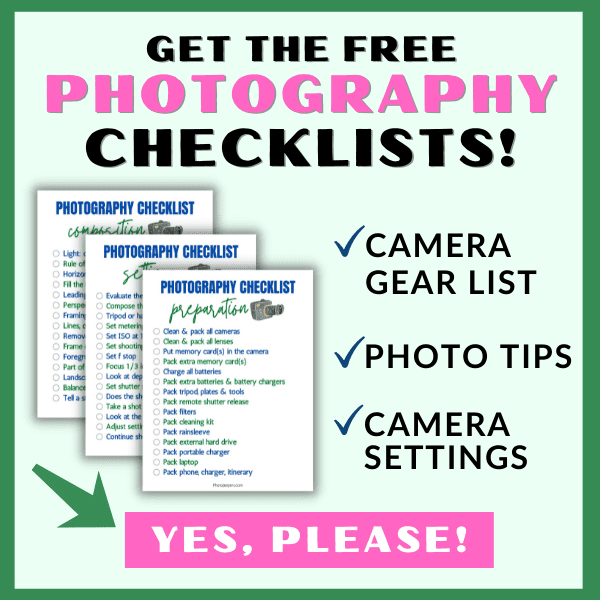
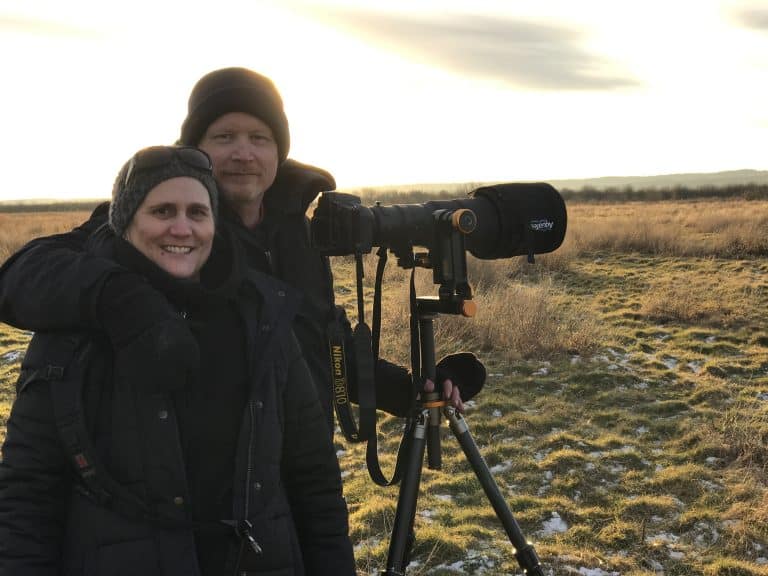
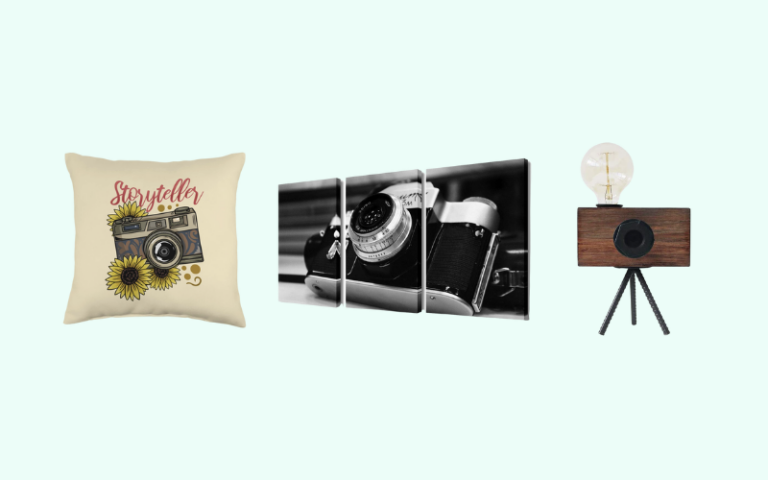
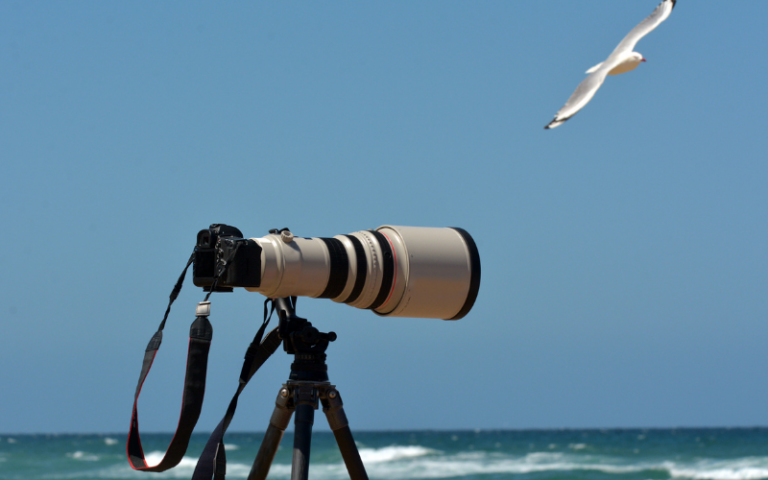
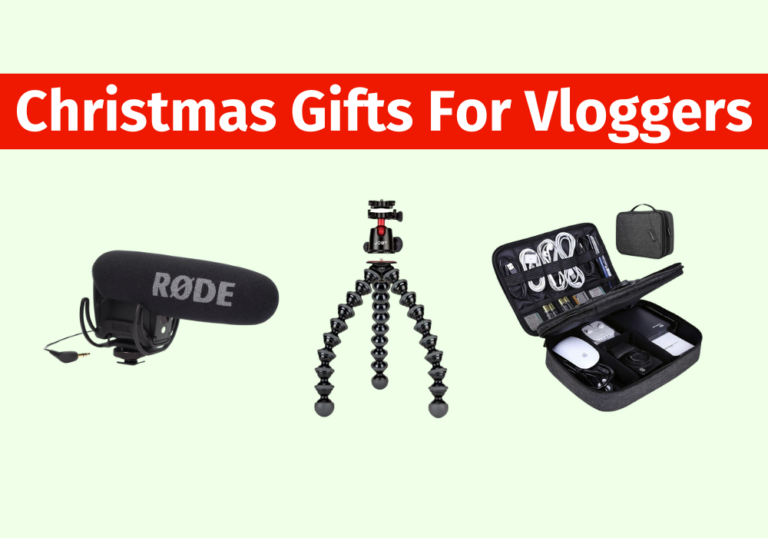


Hello, thanks for the article, i have bought 3 Legged Thing Leo 2.0
Nice article!
This is very helpful. I’m currently looking for a new one since the one I’m using just broke after a couple of uses. I am excited to buy and try Manfrotto’s Befree Live Travel Tripod.
Stay safe and healthy!
Cheers!